Home safety is paramount in ensuring the well-being of ourselves and our loved ones. Our homes are our sanctuaries, but they can also harbor potential hazards if we’re not vigilant. That’s where a home safety checklist comes into play.
It’s like a friendly reminder, helping us take stock of potential risks and ensuring our homes are secure. From preventing accidents to deterring burglars, this checklist is your trusty tool to keep your home the safe haven it should be. Let’s explore its importance and how it can make a difference in safeguarding what matters most.
Table of contents
General Home Safety Measures
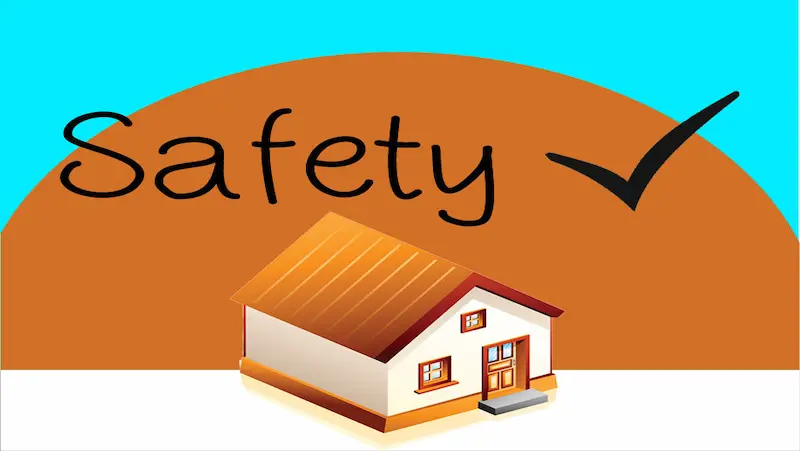
Install and Maintain Smoke Detectors
Imagine waking up in the middle of the night to the faint but unmistakable scent of something burning. Panic sets in as you realize that there’s a fire in your home, and you have precious little time to react. In such a dire situation, having a smoke detector installed and properly maintained can be a lifesaver.
Why Smoke Detectors Matter
1. Early Warning System: Smoke detectors are your first line of defense against a potentially devastating fire. They are designed to detect even the tiniest traces of smoke, giving you and your loved ones precious minutes to escape before a fire becomes uncontrollable.
2. Silent Guardians: These unassuming devices are like silent guardians, working 24/7 without you even noticing. They remain alert, ready to sound the alarm at the first hint of smoke, whether you’re awake or asleep.
3. Peace of Mind: Knowing you have a smoke detector in your home provides peace of mind. It’s a small investment for a powerful safety net, especially when you consider the alternative.
Installing and Maintaining Your Smoke Detectors
Now that you understand the importance of smoke detectors, let’s talk about how to install and maintain them to ensure they do their job effectively.
Installation
1. Placement is Key: Install smoke detectors on every level of your home, including the basement and outside sleeping areas. Mount them on the ceiling or high on the wall, as smoke rises.
2. Interconnection: For maximum safety, interconnect your smoke detectors so that when one goes off, they all do. This ensures that you’ll be alerted no matter where you are in the house.
3. Avoid Bedrooms and Bathrooms: Keep smoke detectors away from kitchens, bathrooms, and garages, as cooking fumes, steam, and exhaust fumes could trigger false alarms.
4. Follow Manufacturer’s Instructions: Always follow the manufacturer’s installation instructions carefully. If you’re unsure, consult a professional for installation.
Maintenance
1. Test Regularly: Test your smoke detectors monthly by pressing the test button. If the alarm doesn’t sound, replace the batteries immediately.
2. Battery Replacement: Change the batteries at least once a year, even if they still seem to be working. Many detectors chirp to indicate low battery levels, but it’s best not to rely solely on this warning.
3. Clean Annually: Dust and debris can accumulate inside the detector, affecting its sensitivity. Vacuum the cover and vents of your smoke detectors at least once a year to keep them in optimal condition.
4. Replace Every 10 Years: Smoke detectors have a limited lifespan. Most should be replaced every 10 years, even if they appear to be functioning correctly. Do different activities for kids to make them understand about the home safety.
Fire Safety
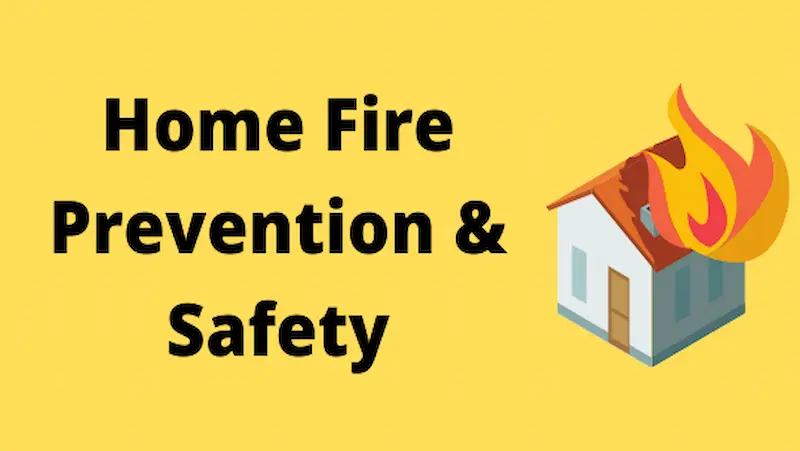
Preventing Fires at Home
1. Mind Your Cooking: Cooking fires are a leading cause of home fires. Never leave your cooking unattended on the stove, especially when using oils or high heat. Keep flammable items like dish towels and paper towels away from burners.
2. Electrical Safety: Overloaded outlets and frayed cords can spark fires. Ensure your electrical system is up to code and avoid daisy-chaining multiple extension cords. Unplug appliances when not in use.
3. Smoking Safely: If you smoke, do it outside and use a sturdy ashtray. Avoid smoking in bed or when you’re drowsy. Dispose of cigarette butts safely.
4. Space Heaters: Keep space heaters at least three feet away from flammable materials, and never leave them running unattended. Turn them off when you leave the room.
Developing an Escape Plan
1. Draw a Floor Plan: Create a floor plan of your home, marking all exit points, including doors and windows. Make sure everyone in your household understands the layout.
2. Identify Meeting Points: Designate a meeting place outside the home where everyone should gather in case of a fire. This ensures you can quickly account for all family members.
3. Practice Regularly: Hold fire drills with your family. Practice different scenarios, such as escaping from different rooms or low visibility due to smoke. This helps everyone become familiar with the escape plan.
4. Know Two Ways Out: Always have at least two ways to exit each room. If one route is blocked by fire or smoke, you’ll have an alternative.
Door and Window Security
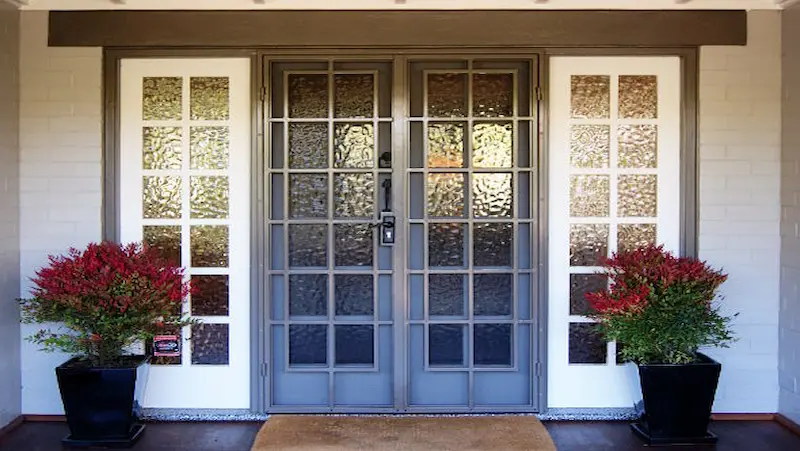
Reinforcing Doors and Windows
1. Solid Core Doors: Start by examining your doors. Opt for solid core doors rather than hollow ones. These doors are sturdier and more resistant to forced entry.
2. Door Frames: Reinforce door frames with metal plates to prevent them from easily breaking during a break-in attempt.
3. Window Film: Apply shatter-resistant window film to your windows. This transparent layer can hold shattered glass together, making it more challenging for intruders to gain access.
Types of Locks and Security Devices
1. Deadbolt Locks: Invest in deadbolt locks for your doors. These locks extend deeper into the door frame, making it much harder for someone to kick the door open.
2. Smart Locks: Embrace the power of technology with smart locks. They allow you to control access to your home remotely, and some models even provide real-time notifications of who’s coming and going. also teach good habits for kids to students.
3. Window Locks: Don’t forget about window locks. Sliding windows, in particular, can be vulnerable. Window locks make it much harder for them to be forced open.
4. Security Cameras: Install security cameras near your doors and windows. Not only do they act as deterrents, but they also provide crucial evidence in case of a break-in.
5. Security Alarms: Invest in a reliable security alarm system that’s professionally monitored. If someone attempts to breach your doors or windows, the alarm will alert the authorities.
Accident Prevention
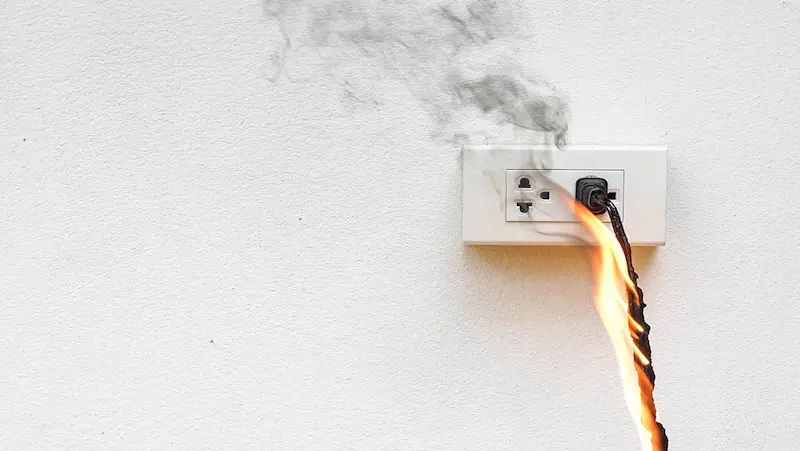
Preventing Electrical Hazards
1. Respect the Outlets: Overloading electrical outlets with too many devices can lead to overheating and fires. Make sure not to daisy-chain power strips, and if you find yourself using too many, consider installing more outlets.
2. Watch for Damaged Cords: Frayed or damaged cords are accidents waiting to happen. Replace any damaged cords immediately, and never use electrical devices with exposed wires.
3. Water and Electricity Don’t Mix: Keep electrical appliances and outlets away from water sources, and never handle them with wet hands. In damp environments like bathrooms, consider installing ground fault circuit interrupters (GFCIs) to prevent shocks.
4. Childproof Outlets: If you have kids, invest in tamper-resistant outlets to prevent curious fingers from getting into trouble and give some positive affirmations for kids. Also check some babyproofing tips for the safety of kids.
Inspecting and Maintaining Electrical Systems
1. Regular Inspections: Periodically inspect your electrical system for any signs of wear or damage. Look for exposed wires, flickering lights, or warm outlets. If you’re unsure, consult a licensed electrician.
2. Circuit Breakers: Make sure your circuit breakers are properly labeled. This will help you quickly identify and address any issues without fumbling around in the dark.
3. Upgrade Old Wiring: If your home or workplace has outdated wiring, consider upgrading to modern, safer options like AFCIs (arc-fault circuit interrupters) and AFCIs (ground-fault circuit interrupters).
4. Don’t Ignore the Flicker: Flickering lights could be a sign of a bigger electrical issue. If you notice this, consult an electrician to determine the cause and fix it promptly.
Emergency Preparedness
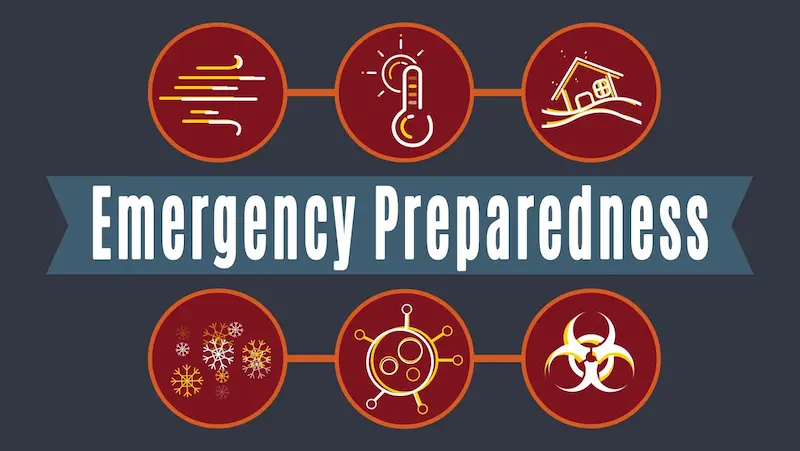
Essential Items for a Well-Stocked First Aid Kit
1. Adhesive Bandages: These are your go-to for small cuts and scrapes. Having a variety of sizes is wise.
2. Sterile Gauze and Adhesive Tape: For larger wounds that require covering and protection.
3. Antiseptic Wipes: To clean wounds and prevent infection.
4. Scissors and Tweezers: Handy for cutting tape, clothing, or removing splinters.
5. Pain Relievers: Over-the-counter pain relievers like aspirin, ibuprofen, or acetaminophen can be a lifesaver.
6. Thermometer: To monitor fevers or check for hypothermia in emergency situations.
7. Cotton Balls and Swabs: Useful for cleaning wounds or applying ointments.
8. First Aid Manual: A simple guide can help in case you’re unsure how to treat an injury.
9. Disposable Gloves: Essential for infection control when administering first aid.
10. CPR Face Shield: In case you need to perform CPR, this adds a layer of protection.
Emergency Supplies Checklist
1. Water: You’ll need at least one gallon of water per person per day for drinking and sanitation. Keep a three-day supply on hand.
2. Non-Perishable Food: Canned goods, granola bars, and dried fruits can sustain you during an emergency. Don’t forget a can opener!
3. Flashlights and Batteries: Reliable lighting is crucial. Opt for LED flashlights and have spare batteries ready.
4. Multi-Tool or Swiss Army Knife: These can be invaluable for various tasks.
5. Blankets or Sleeping Bags: Staying warm is a priority in an emergency.
6. Portable Phone Charger: A charged phone can be a lifeline, so keep a portable charger handy.
7. Personal Hygiene Items: Toothbrush, toothpaste, soap, and sanitary supplies are often overlooked but essential.
8. Important Documents: Copies of IDs, insurance policies, and any critical documents should be in a waterproof container.
9. Cash: In case electronic transactions are unavailable.
10. Maps: Local and regional maps can help you navigate if GPS isn’t an option.
Natural Disasters
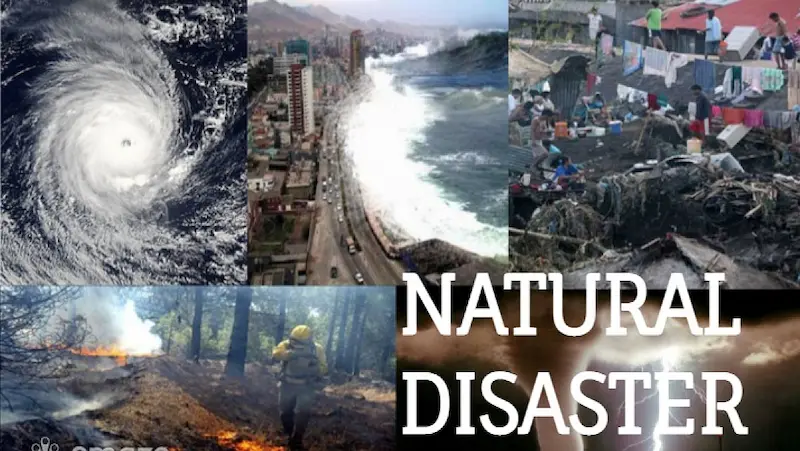
Understanding Local Risks and Hazards
First things to do for kids near me first, it’s crucial to understand the local risks and hazards in your area. Every place on Earth has its unique set of potential disasters. If you’re living on the West Coast, earthquakes might be a concern, while those on the Gulf Coast might be more focused on hurricanes.
Take some time to research and find out what natural disasters are most likely to affect your region. Local government websites, emergency management agencies, and community resources are great places to start.
Preparing for Earthquakes, Hurricanes, Floods, etc.
Once you know what you’re up against, it’s time to prepare. Here are some steps to get you started:
1. Emergency Kit: Assemble an emergency kit with essential supplies such as non-perishable food, water, flashlights, batteries, a first-aid kit, and any necessary medications. Don’t forget items for your pets if you have them.
2. Family Communication: Develop a family emergency plan. Designate a meeting place and ensure everyone knows how to contact each other if separated during a disaster.
3. Home Safety: Secure your home against potential hazards. For earthquakes, consider strapping heavy furniture and water heaters. For hurricanes, reinforce windows and doors.
4. Evacuation Route: Familiarize yourself with evacuation routes in your area. Know where local shelters are located and have a plan for getting there safely.
5. Stay Informed: Invest in a NOAA weather radio or stay tuned to local news for updates. Many disasters give some warning, and staying informed can be a lifesaver.
6. Practice Drills: Regularly practice disaster drills with your family. This helps ensure everyone knows what to do when a real emergency strikes.
7. Insurance: Review your insurance policies to make sure you’re adequately covered for potential natural disasters. This can save you a lot of trouble down the road.
Conclusion
In conclusion, safeguarding your home with an essential safety checklist is not just a choice; it’s a responsibility. Your home should be a sanctuary where you and your loved ones feel protected at all times.
By following a comprehensive online safety tips for kids, you can ensure that your home is a secure and comfortable haven for your family and also ensure child safety. So, take the time to assess your home’s safety measures, make necessary improvements, and prioritize the well-being of those you hold dear. A safer home is a happier home.
Also, BrightChamps provides a comprehensive platform for learning about money for kids, offering interactive and engaging resources that teach financial literacy, budgeting, saving, and other essential money management skills.
Frequently Asked Questions
A1. A home safety checklist is vital because it helps identify potential risks and hazards in your home. By addressing these issues, you can create a safer environment for your family and prevent accidents.
A2. Your checklist should cover things like smoke detectors, fire extinguishers, first aid supplies, secure locks, and safety gates, among others. These items help ensure your home is well-prepared for emergencies.
A3. It’s wise to review and update your checklist at least once a year. Also, revisit it when there are significant changes in your home, like renovations or when you have a new family member.
A4. Common hazards include loose cords, slippery floors, sharp objects, and unsecured furniture. Your checklist should detail how to minimize these risks.
A5. Childproofing involves installing safety gates, outlet covers, cabinet locks, and securing heavy furniture to prevent accidents. Your checklist should guide you through these steps.
A6. Yes, ensure your checklist covers working smoke detectors, a fire escape plan, and accessible fire extinguishers. Regular fire drills are also important.
A7. The checklist should include inspecting cords for damage, not overloading outlets, and using surge protectors. Regularly check the wiring and circuit breakers.


 We are an army of educators and passionate learners from BrightChamps family, committed to providing free learning resources to kids, parents & students.
We are an army of educators and passionate learners from BrightChamps family, committed to providing free learning resources to kids, parents & students.







